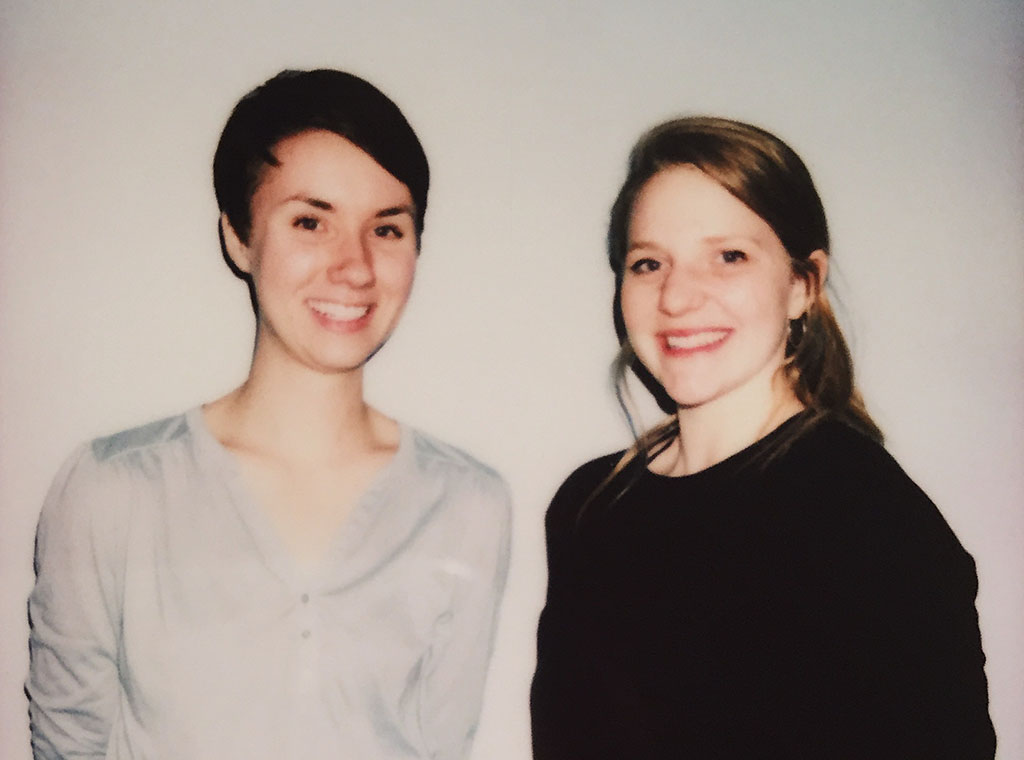
During his final speech as President of the United States, Obama quoted Atticus Finch of To Kill a Mockingbird, saying, “You never really understand a person until you consider things from his point of view. Until you climb into his skin and walk around in it.”
I will be transparent: this is a story written by a liberal woman about the journey of two liberal artists. This is not an attack on any political party, nor is it meant to normalize Donald Trump or his chosen cabinet. This feature is about this question: how do we, as Americans, move forward? It’s about two young women, Carly Hopps and Samantha Belden, who, after being devastated by the results of the presidential election, decided to drive to North Dakota. They needed to act. But as they traveled, their original intent—to protest at Standing Rock—transformed, forever changing the way they view those different from themselves.
Many of us believe that the people we disagree with are monsters. There is no denying that some extremely dangerous and volatile people have come out of the woodwork since the 2016 election. But is everyone who voted for Trump a “deplorable” monster? What if there are people out there you don’t see eye-to-eye with that are products of a different environment? What if we all took the time to consider things from an opposing point of view? You know, walk around in it. After all, there is something we all have in common: our government.
Carly and Samantha, both 22 and recent graduates of Columbia College in Chicago, were shocked by Trump’s election. How these ladies chose to act on their worlds being rocked, however, is anything but ordinary. But let’s start here: for Hopps and Belden, this was personal.
“My grandmother has advocated for women’s rights her whole life. I wanted her to see a female president,” Hopps said. “On the other side of my family, my grandfather came out as gay in his 80’s, after being in the closet his entire life. Now, our Vice President believes in conversion therapy. He believes that my grandfather, if he prays hard enough, will be straight. I think my grandpa knows [he’s not straight]. He’s tried it for eighty-something years. He’s not into it.”
Belden, originally from Michigan, also hoped to see the first female president elected last year. A photographer and artist, she counts the women in her family as her inspiration. “My grandmother is my muse. I photographed her for the past three years. She’s overcome a lot in her life. I grew up seeing her be very independent but knowing when to be dependent, too. That’s who inspires me the most.”
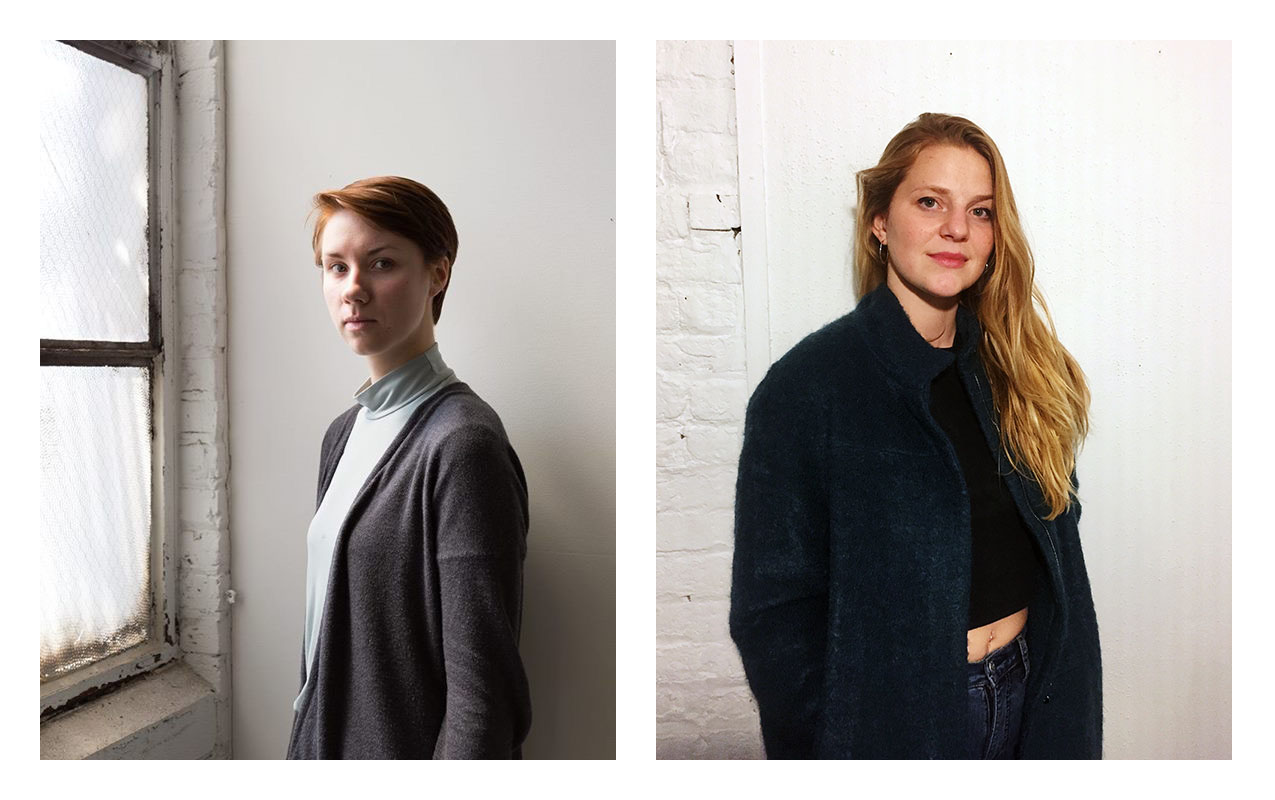
Samantha (left) and Carly
On election night, as the two watched the outcome with friends and family, their vision of the future began to crumble in front of their eyes. “Someone said, ‘We must go protest tomorrow. We must go to Standing Rock!’” Hopps recalls, “I had a knee jerk reaction of, ‘Yes, we do have to.’” Hopps, who describes herself as a very reactive person, enlisted the help of Belden, whom she met in the dorms her first semester at Columbia. At the time, Hopps was putting her marketing degree to use at a full-time job, while Belden had some time in-between her work as a freelance photographer and museum preparator. The next morning, Hopps quit her job, and the two began their drive across the United States. Destination: North Dakota.
But during the trip, something changed. The two realized they were going to protest at Standing Rock, where the army planned to route the Dakota Access Pipeline through the water supply of the Sioux Nation, for the wrong reasons. With lots of time to kill in the car, they began discussing other ways they could create something on this trip.
“On our way there, we realized we were going for the wrong reasons. We were going there because Trump won the election, but the Sioux Nation had been there way before Trump was even taken seriously,” Belden said. “As we were driving, something came up in conversation. One of us suggested stopping to photograph people along the way, maybe even interview them?”
Belden would photograph the subjects, while Hopps documented their story. The duo intentionally began their process in towns where most residents voted for Trump. They stopped at small shops, bars, and restaurants along the way and approached people they met at rest stops. The goal was to have a civil, natural conversation, leading to a better understanding of the people who believed in this path for America. They explored the other end of the spectrum as well, traveling to Portland, Oregon, where they interviewed a person with Anarchist beliefs (who was not a part of the violent Anarchists disrupting peaceful protests). At the end of the trip, they did go to Standing Rock for a few days to protest, with a new idea of how they could participate.
After two weeks, the two returned to Chicago with a newfound understanding and respect for those they don’t agree with. That’s not where the project ends, though. Hopps and Belden have committed themselves to further research for the next four years. They want to spend a significant amount of time in three categories of America’s landscape: suburban, rural, and urban communities. With this project, Hopps and Belden hope to bring understanding not only to their own lives, but to the world.
“We separate these communities when we talk about them, but then to think of having a project where they’re all being compared together…it goes with the idea that we are all Americans,” Belden said. “We all rely on this political system, and we all are influential in how elections turn out.”
For Hopps, it all boils down to one simple, yet complicated, statement: “We all have the same president.”

Photo of Bozeman, MT by Samantha Belden
Just so we have the timeline of events straight, this journey all began with the election of Donald Trump, which inspired the trip to Standing Rock. Correct?
Carly: Yeah, we left at 10am the morning after the election.
Sam: It was Carly’s idea.
Carly: We have this thing where one of us comes up with a crazy idea, and the other is just like, “…Okay!” [Laughs] I had a job here, but I’m only 22. I didn’t have anything holding me back. I had $300 in my bank account. That was enough to get me to Standing Rock and back. So, I said, “Let’s do it.”
Sam: I couldn’t understand how I just up and left everything. I’ve never been in a place to do that in my life. It felt very surreal.
Carly: She’d be freaking out, and I’d be assuring her it would all be fine. Then she’d calm down, and I’d be like, “No, it’s not going to be fine!” One of us was having an existential crisis the entire time.
What initially pushed you towards Standing Rock?
Sam: One reason I wanted to go to Standing Rock specifically was to experience the history that was happening. It is such a historical moment and I wanted to be there to witness it. The whole trip was anxiety inducing, for sure.
Carly: … and anxiety-born! We struggled the first couple of weeks. I felt weird about it because it was such a privileged thing to do. But I could do it. There are a lot of people who want to be there, but can’t. I could, so I did.
You ultimately made the decision to delay Stranding Rock and embark on a different adventure. When did the initial trip grow into the archival project you two are currently working on?
Sam: On our way there, we realized we were going for the wrong reasons. It ended up turning into this project. We would go to specific towns and try to find people we could have natural interactions with. We didn’t seek out certain types of people.
Carly: It was, like, people we met at rest stops, or we’d stop into a little bar we thought looked interesting. While talking to the bartender, Sam and I would sort of look at each other and be like, “Let’s interview them.”
Sam: The whole basis of the project was to dive deep and document the political landscape post-election.
Carly: We were so caught off guard by the outcome of the election. We were wondering, “Who are these people that voted for Trump?” At the beginning, it was focused on Trump supporters and those fly-over states. Then next thing we knew, we were in Seattle. [Laughs]
Sam: We got to Seattle, and we were like, “How are we here?!”
Carly: We started interviewing people there, too, and getting the other side of the equation. It evolved from there. Now, it’s shifted to doing the archival piece. We’re going to collect as many interviews as we can because we think it’s an important time to document. We want to document three different American landscapes throughout the Trump presidency, focusing on the people in those communities. We’re documenting urban, rural, and suburban. We’re doing Chicago for urban, and we know where we want to do our rural piece, but we’re still thinking on suburban.
Sam: We separate these communities when we talk about them, but then to think of having a project where they’re all together, not like compared and contrasted…it goes with the idea that we are all Americans. We all rely on this political system, and we all influence how an election turns out. It’s thinking about the power that communities have.
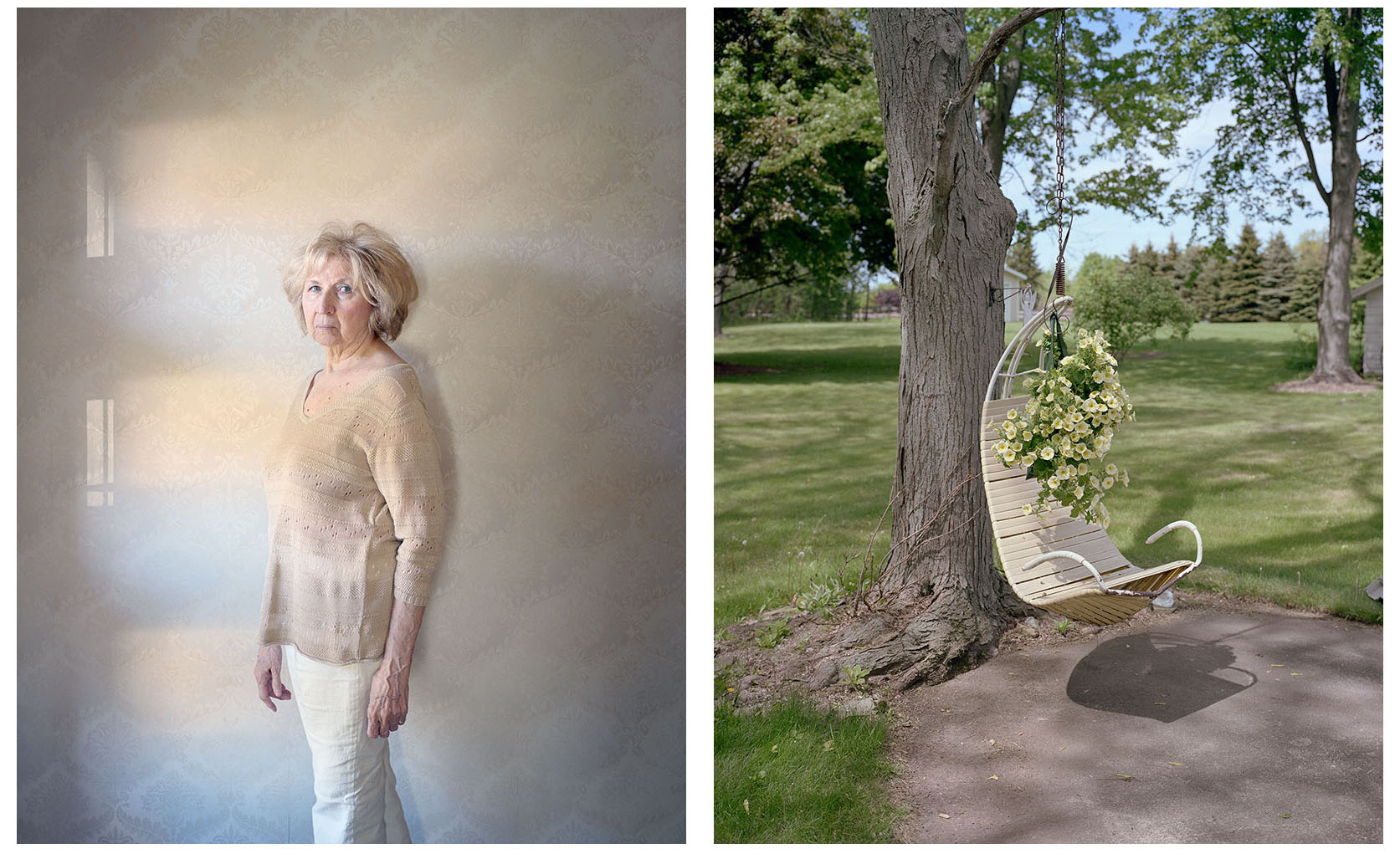
Photos by Samantha Belden
Can you tell me about some of the specific places you stopped along the way and the people you interviewed?
Carly: Our first interview was with someone who voted Trump. It was in Ingomar, Montana. We drove for 60 miles in Montana and saw straight up nothing except for prairie and a couple of abandoned houses. It was wild. Then we came across Ingomar, which had, like, 15 people living there and maybe 30 structures. Half of those structures were abandoned trailers or houses. We were talking to this woman, who is awesome despite our contrast in political views. She said upfront, “You know, of course it’s all racist cowboys here in Montana, but people in Montana vote for what they know to be true, and that’s that we rely on: coal.” For them, the coal industry is their life. We’re lucky that we are even capable of seeing beyond that to human rights on a larger scale, because, for them, their life is their livelihood. That’s how they eat, that’s how they have a roof above their heads.
Carly: We interviewed another woman at a bar in another tiny Montana town. It was a bar that clearly had its faithful regulars. She was talking about how, one time, this guy grabbed her leg, and she went back into the kitchen, grabbed a knife, and told him, “You can’t do that in my bar.” Like, this girl is a bad bitch…and she also voted for Trump. We tried to stay unbiased when we were doing these interviews, but we brought up Trump’s remarks about women to her. She was like, “You know what, men say some dumb shit.” That was rough for me. This woman also said, “If you think there is any man in the country who hasn’t said shit like that behind closed doors…” I grew up with boys, and they say some dumb shit. Gross shit, dumb shit, but they would never, ever talk like that. It’s sad to me if you’re a woman and that’s what you’re used to. You’re okay with that. I think that’s what it is. We’re just used to it at this point. It didn’t surprise me that Trump said that. It surprised me that he said that and still had a campaign that led to the presidency.
Did interviewing those you disagreed with politically change your point of view on any issues? Did your perspective of Trump supporters change over the course of this project?
Carly: My political opinions didn’t change, but my perception of Trump supporters did. It just gave us the opportunity to understand who these voters were that we had never talked to. I hate the whole “Trump supporters are deplorable” thing. I keep thinking back to our interview with the woman in Ingomar, Montana. She didn’t vote for Trump because she was ignorant. She voted for him because Hillary in her opinion wasn’t “Montana friendly.” Her town’s livelihood relies on coal, that’s why. That’s not where my priorities are, but for her, that was a real reason to vote for Trump, and she explained it incredibly well. She knew what she was talking about.
Sam: The interviews didn’t sway my views on issues or make me question my decision to vote for Hillary Clinton. It was very easy to get lost in the perspectives of people who voted for Trump, though, because most people gave us well-thought-out reasons for why they voted for Donald Trump. I empathized with the people we interviewed, and at times I would even feel bad that I voted for someone who wasn’t considered “Montana friendly,” even though most people in Montana voted for someone who isn’t friendly for oppressed people. I don’t think it’s fair to call all Trump supporters deplorable, and I don’t think they are. My opinion of Trump supporters has changed. I’m not afraid to speak to these people, and it is nice to know that we can have a civilized conversation about the current political state of our country. Everyone who voted did what they thought was best for them, and it was interesting to learn what specific issues affect people’s daily lives in other areas of the country.

A post office in Montana. Photo by Samantha Belden
What about the other end of the spectrum? What did you learn in Seattle and Portland?
Sam: It was refreshing to talk to people with the same political views as us. Portland was more shocking, but Seattle was refreshing, especially after coming out of Trump territory.
Carly: Seattle was awesome, but Portland was way more interesting. There is this anarchist group that has been coming into peaceful protests and even fighting with the other protestors. When we first heard about this, I was like, “We need to interview an anarchist.”
Sam: …and I didn’t want to go up to random anarchist after there had been so much violence.
Carly: We found this person whose politics were anarchist, but they were not a part of this violent group. They were basically saying that we need to align our communities and that they think it’s okay to smash windows. I get it. So yeah, Portland was interesting. We asked everyone how the outcome of the election effected their future. People were like, “I don’t want to leave Portland. I feel safe here.”
Did you ever meet anyone who was unwilling to talk to you? How did you approach your interview subjects to ensure they felt comfortable?
Carly: I can only think of two people we asked to talk who were hesitant or outright refused. I think everyone was worked up around the election. Whether excited or devastated, people wanted to talk. We also were strict with keeping our opinions to ourselves and sort of letting the subjects run with it. After we gave them the chance to say everything they needed to or wanted to, that’s when we would start a dialogue with our opinions. Our concern, particularly when talking to Trump supporters, was that if we started the conversation telling them we were liberals, we wouldn’t get an honest opinion out of them. We didn’t want a defensive argument. We don’t want our subjects on the defense. I don’t think that’s giving them a fair chance to state their argument.

Pictures of Trump and Parliaments. Photo by Samantha Belden
What are your plans for the project? How will you release it to the world when you’re ready?
Carly: We’re still fleshing it out right now. I’m going to be living very close to where we want to do the rural study, which is Ingomar, Montana. I’m going to be traveling back and forth to keep getting to know the woman we told you about earlier, keeping up with her. We’re looking for grant money right now to go and spend two weeks in each spot, ideally living with a family. Getting to the point where we feel we can portray our subjects accurately is crucial. That’s where we kind of strayed from our original plan and came up with the archival piece.
Sam: There’s a lot of cool ways we could present it, either in a museum or gallery space. It could also exist on the internet or in a book. I’m excited. I hope June, the woman from Ingomar, Montana, is as excited to do this. She was so cool. It will be so nice to not only portray these people in pictures but also, as Carly said, get to know them. We still are outsiders to these people, but at least we’re making that connection and getting to know certain communities.
Carly: The thing is, we all have the same government. We all have the same horrible system and rely on it, willingly or unwillingly. That’s a gateway for us. We are still outsiders in these communities, but we’re all a part of this. The whole “not my president” thing, I get it. I get people saying it. But what’s fucked up is he is your president. He’s your president, and you need to figure out what your role is going to be.
Sam: And what you can do aside from just putting a sign outside of your house saying “not my president.”
So, off-target from your original plan, Standing Rock was the last destination on your trip. What was your experience like there?
Sam: Getting context, beyond what you hear on the news or online, was interesting. The town is built around the river. You would be fighting for this space, too, if you lived there and this river was your natural resource. Water is the most important natural resource. It was humbling to put that all into context. We weren’t there for that long, though. Two nights, two and a half days. We were there the Sunday night of protests where the police were hydro-bombing people with water cannons. That was crazy.
Carly: We got there at night, and the next morning they had orientation at 9 a.m. Thank God we went to orientation. There were these things covered in the orientation, especially about entering the space and taking pictures…it made us realize we had no place being there and documenting if we were only there for three days. It was like, “Oh my God, who did we think we were?” These two white girls from Chicago stroll in for three days and act like they can portray this movement accurately.
What did you see at the protests?
Carly: It was like a war zone, and it’s one-sided. No one’s doing anything against the police except just trying to stand there…but it ended up looking like a war zone. The police built a blockade that’s made of old trucks and military tanks to protect DAPL. It’s on Sioux Tribe land, and they’re blocking a public road, so the Sioux are just trying to stand on this bridge near the blockade. That’s their act of protest: just stand there…and that’s not okay with the police.
Sam: The police were literally hosing people for hours. Just continuous hosing. People were falling over. They set off all of their tear gas in the beginning.
Carly: Tear gas can get past anything but a legit gas mask. At first they were throwing them on the front lines, but then they started throwing it to the back where people are just standing. They have a sound machine, and when they turn it on it makes you dizzy and nauseas.
Sam: There was a tear gas canister that fell right in front of us, and we were in the back of the crowd.
Carly: What was so amazing about what’s going on there is that, a lot of the protests I’ve been to are led by younger people, but there, elders from the community are on the front lines. There were a few women there in their eighties. I don’t know a lot of people over the age of thirty, let alone fifty, who would go out and fight and take that kind of beating.
Sam: But they have no other choice.
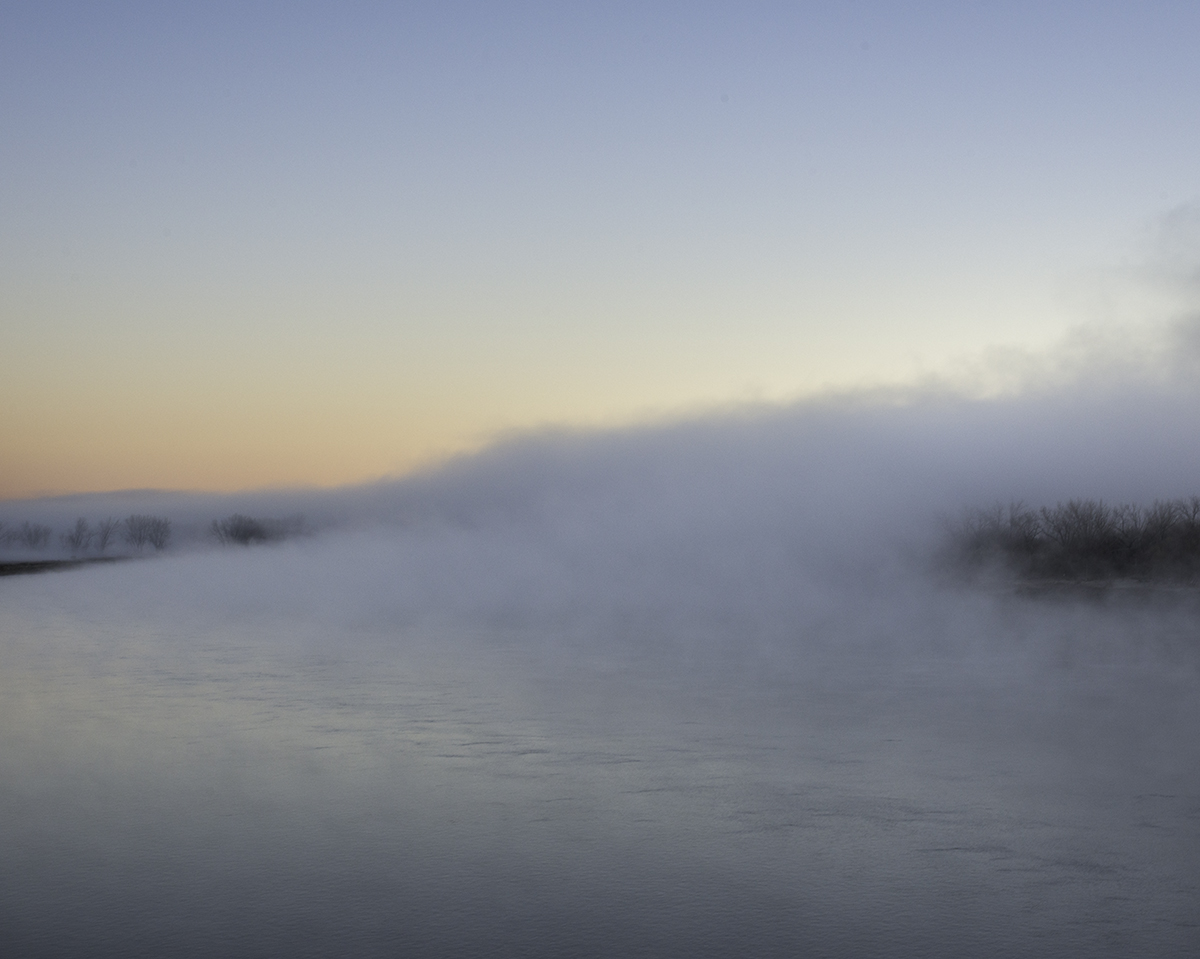
Yellowstone River. Photo by Samantha Belden
What are some obstacles you’ve met along the way, and how did you overcome them? This goes for both the trip and project, specifically, as well as your day-to-day life.
Sam: There were a lot of obstacles that came about during our road trip. Thinking of our privilege, that was a huge obstacle for me. I also had to overcome my hesitation to make a body of work with someone else. I don’t usually work in collaboration with anyone. You must learn how to communicate and get on the same page conceptually.
As for in my day-to-day life, the career of photography is a male dominated field, so that’s an obstacle for me. Especially in the museum preparatory work I do now. Installing art can be physically challenging. People don’t take me seriously when they look at me, like I can’t pick up something heavy. For real, I deal with that all the time. But I can do this. I can go on a ladder. I can climb scaffolding…
Carly: Why do guys think that women can’t climb ladders?! Like our balance is thrown off by having a vagina? [Laughs] I agree with Sam when it comes to trip obstacles. The entire time I was struggling with my own privilege. That, and I’m a very reactive person. The whole trip did start as a strong reaction to the outcome of the presidential election. At first I was like, “Good job Carly. You got yourself in deep on this one!” It turned into something I’m obviously excited about, but I had to keep checking myself along the way to remind myself why I was there. After the election, everything felt kind of spooky. Of course, as two young women traveling the U.S., people are already telling us to be careful. Suddenly we were like, “Holy shit, this is actually scary.” If we were two guys, we wouldn’t have to worry about stopping at a rest stop or who saw us going to that rest stop. That heightened anxiety made traveling the country on our own pretty terrifying. Then there was obviously the anxiety of money, time, and where the fuck are we going? What the fuck are we doing? But we pushed ourselves, and we pushed each other a lot. It paid off.
How do you define success, and do you consider yourself successful?
Sam: I define success by just being happy with your life. I used to have high standards for myself. Especially in college. As soon as I achieved a goal, I was searching for the next step. Then I realized I don’t have to put as much pressure on myself. After graduation, I’ve been learning that it’s important to just be happy with what you’re doing. I think that’s how I define success. I’m happy starting this new project, and freelancing. I feel I’m successful in my life right now even though I don’t have a huge career.
Carly: I think the fact that I can go to bed at night liking my life and feeling good about the decisions I’ve made…I would consider that successful. Being successful to me is doing something that I feel good about and that the people around me feel good about. Impact. Both of my parents came up through the non-profit sector. That’s been a huge part of growing up for me. Being happy and doing something that I feel has greater meaning is important to me. I’m doing something now that I feel good about its greater impact. If I can look back at the end of my life and say “Yeah…I think I did a pretty good job,” that’s success. Also, being okay with the mistakes you’ve made.
You can learn more about Carly on her Instagram, @cappachow, and check out Sam’s photography on her website. The duo also just accepted a month-long residency to work on their project at Chicago artist studio The Overlook Place. You can find out more about Standing Rock and how to support the Sioux Tribe here.


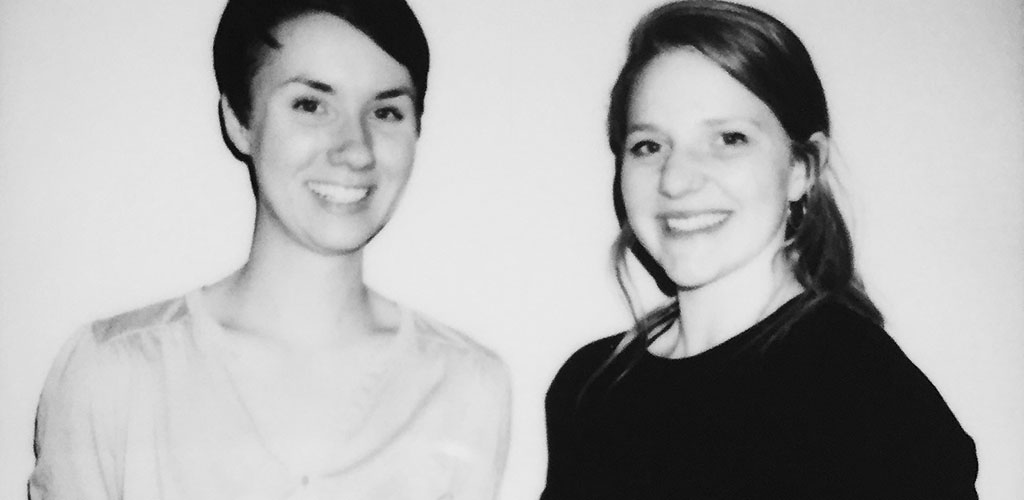
Tory Dietel Hopps and Jonathan Hopps
Posted at 01:16h, 24 JanuaryAs parents of one of these two young women – we think they are an example to others! Love the message of keep your minds open and walk in other’s shoes!!